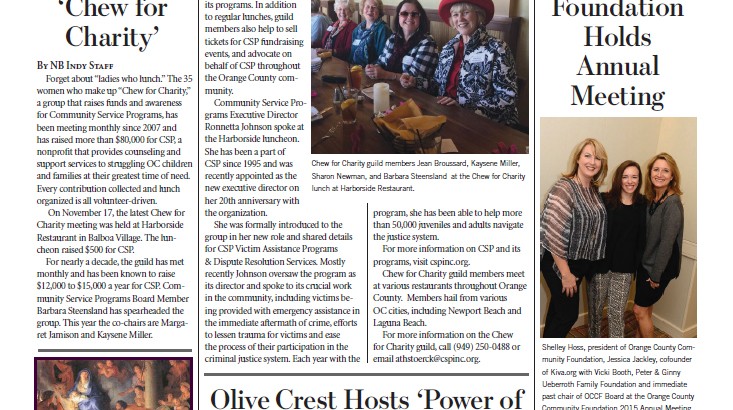
When the Tables are Turned: Students Pitch their Former Professor
April 13, 2016
For public relations students, pitching the media is one of the most important skills they can learn. And there is no better proof of the effectiveness of classroom practice than having to use those skills in the real world. But what could be more nerve-wracking than pitching your client to the man who taught you how to pitch?
Chris Trela is an adjunct professor of Public Relations who teaches Media Relations and PR Campaigns. He is also the owner of ArtsPR, a boutique PR agency that specializes in public relations services for arts organizations, and the editor of the
Newport Beach Independent
newspaper, where former students now pitch him.
As a PR practitioner and an editor, Trela is on both sides of the pitching fence—and he knows what works and what doesn’t.
In class, he teaches students the many ways that PR practitioners interact with the media, from crafting pitches and handling press conferences to greeting the media at events. He also brings in a variety of guest speakers who are experts in their particular industry to give current, real-world examples. Some of his former students are also now among those speakers, sharing what they’ve learned on the job with the next generation of PR practitioners.
As for pitching stories, Trela aims to give his students as much direction as possible so they can craft the perfect pitch.
“An email pitch is usually the first point of contact that a PR person has with a journalist,” Trela says. “Journalists get hundreds of emails a day, so how do you avoid getting your pitch deleted? Generally, you have about three seconds to catch attention in the subject line, perhaps another 5 to 10 seconds in the opening paragraph of a pitch. What you include in the subject line and the first paragraph can make the difference between garnering interest or garnering delete.”

Once a semester, Professor Trela appears in class as Robert Riteway, CEO of Riteway Products, based in San Antonio, Texas. He addresses the students as though they were his PR team, and tells them he is introducing a new product developed in partnership with Apple called the iJava coffee maker that uses Siri as a personal barista. The students have to create an email invite for a media launch event, a photo shot list, press kit, etc. Says Trela of the event: “Somehow I manage to stay in character (complete with Texas accent) for the duration of the class, even answering questions in character.”
Trela shares real pitches that he receives at the
Independent
, both the good and the bad, explaining why one was good or bad, and how successful they were in getting his attention.
“I also share my email exchanges with PR people so they can see proper etiquette in working with journalists,” he says.
According to Trela, crafting a good pitch takes practice, time, and knowing specific tips and tricks, like putting the name of the journalist in the subject line and keeping it short. Even something as simple as attaching a press release or pasting it into the body of an email can affect how a journalist views the pitch.
Surprisingly, Trela gets former students pitching him stories almost daily.
“Several former students now work for local PR agencies, and I get pitched by them all the time,” he says. “In fact, one of them who pitches me a lot is usually a guest speaker in my class, coming in to talk about how she’s incorporated what she learned at Chapman into her job skills.”
“One of the biggest and probably most valuable things I learned from Chris was how to craft a successful pitch,” says Hannah Goodman (BFA/Television & Broadcast Journalism ’15). “In my current position as a Content Strategist for Zillow Group, I apply those skills every day when I pitch blogs and outside sites on a collaboration with our brand. I credit what I learned from Chris at Dodge as one of the main reasons why I have been so successful in my current position.”
Some of the students do not realize they are pitching to Trela when they send their initial email, but most do soon afterward.
“It was definitely more nerve-racking, since he was the one who taught me about media relations,” says Ranggin Hedayat (BA/Public Relations & Advertising ’14). “I needed to make sure I utilized everything he taught me and pitched him using best practices.”
Trela has received several notes from former students, thanking him for teaching them proper pitching skills.
“They did not realize how important that was until they got jobs and started pitching journalists every day!” he says.
In one way, the job of teaching never stops. Trela often provides feedback to his former students when they pitch him, and it’s always positive.
“I know they’re thrilled when a story runs in my paper or online, because that’s a success in the eyes of a client, and their boss,” he says. “Even better—I tell them I am going to share their pitch as an example for my class, and I do. They’re flattered, and I’m like a proud parent showing off the work of my kids!”

